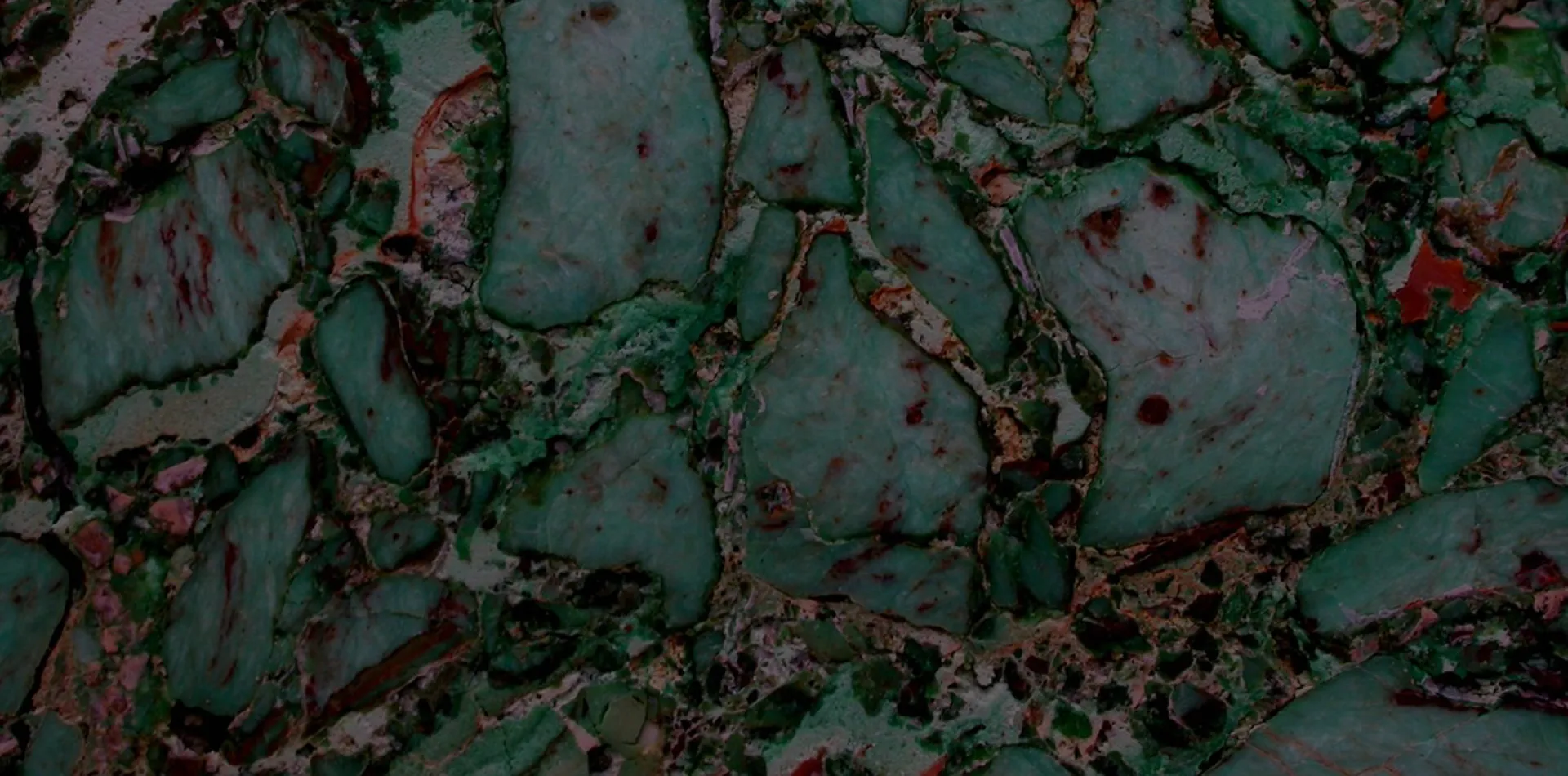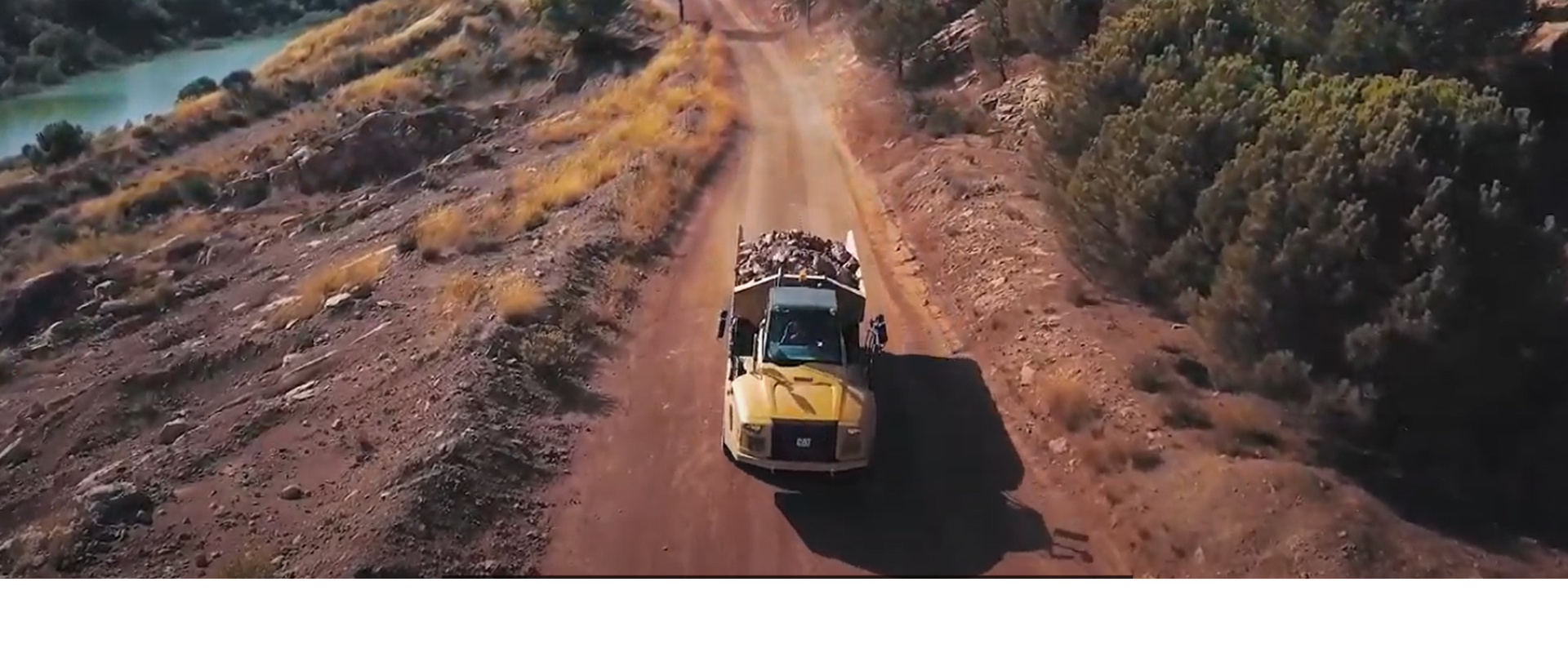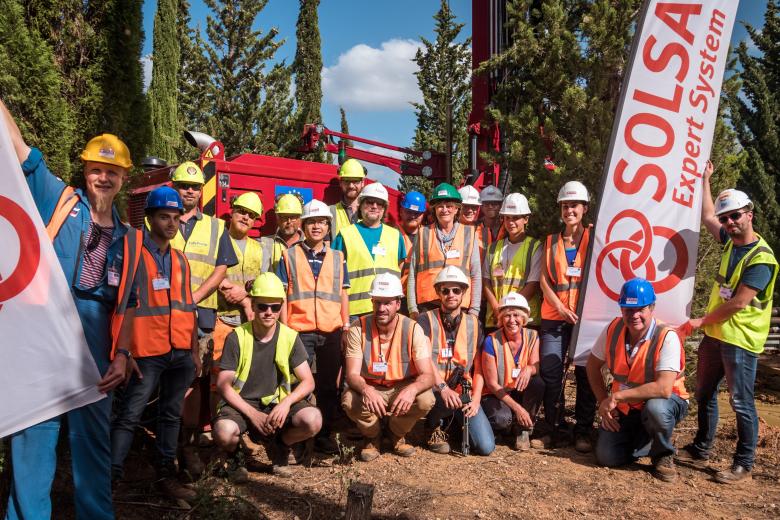SOLSA: Sonic Drilling coupled with Automated Mineralogy and chemistry On-Line-On-Mine-Real-Time
SOLSA was a Research & Innovation project, lead by ERAMET and financed by the Horizon 2020 program of the European Commission, that ran from 1st February 2016 to 31st December 2020.
SOLSA is the first automated expert system for on-site cores analysis. With access to data on-line, great savings are expected on the number of drill holes, the accuracy of geo-models and economic evaluation of ore reserves. SOLSA responds perfectly to the need for "New sustainable exploration technologies and geo-models" of SC5-11d-2015. The objective was to “develop new or improved highly efficient and cost-effective, sustainable exploration technologies”, including:
- integrated drilling optimized to operate in the difficult lateritic environment with the challenge of a mixture of hard and soft rocks, extensible also to other ore types,
- fully automated scanner and phase identification analyser and software, usable as well in other sectors.
SOLSA combines for the first time the non-destructive sensors X-ray fluorescence, X-ray diffraction, vibrational spectroscopies, 3D and hyperspectral imaging along the drill core. For this purpose, SOLSA developed innovative, user-friendly and intelligent software, at the TRL 4-6 levels. To minimize the risk and capitalize on the newest technologies, the subsystems for the hardware, were selected on the market of miniaturized sensors.
SOLSA is intended to revolutionize exploration and push Europe in front, by reducing the exploration time at ≈ 50%, the analysis time from 3 - 6 months to real-time and thus reduce the environmental footprint
H2020 SOLSA project
-
Start date: 1st Feb2016.00
-
End date: 31 Dec2020.00
-
Partners9.00+3 x 3rd parties
Summary and overall objectives of the project
The goal was to develop an innovative expert system for:
- Obtaining reliable drill hole samples, in a fast and cost-effective manner, of better quality than those obtained by current techniques. The sonic technique was chosen for its development potential toward the reduction of drill hole costs and the improvement of the quality of the cores;
- Obtaining mineralogical data, systematically and directly on site at the mines, meaning also chemical data as a help for the determination of the mineral associations and adding information on the core samples mechanics.
The innovation of the SOLSA « expert system » consists in the combination of the different techniques used in drilling and analysing the chemistry and mineralogy of the core samples. Data received from the whole expert system will contribute to improve the reliability of the 3D models on full interpretation of these data sets. Having access in real time to data on chemistry, mineralogy, textures, grain sizes, discontinuities, and phase quantifications will provide precious information to define new and innovative geo-metallurgical proxies in order to increase the efficiency of the raw material industry.
Work performed and main results achieved
Regarding the exploitation plan, the design, purchase and assembling of instruments for building the SOLSA prototypes for drilling and mobile field analyses were achieved. Lab analyses using the techniques XRD, XRF, Raman, hyperspectral spectroscopy and hyperspectral imagery contributed significantly to the filling the database library. The benchtop analyser prototype was assembled and installed in a trailer named MODULAB where all devices are fixed on solid frames protected from vibrations by silent blocks. It was certified as compliant and is equipped with safety sensors in order to prevent any break-down.
Several major tests were performed on the different modules:
- May 2018: Drilling tests at Giesbeck on 3 blocks (1 m3 size each) of fresh peridotites from New Caledonia.
- Sept. 2018: Field tests on SODICAPEI bauxite mine, located in Villeveyrac in southern France. 2 weeks of drilling were done to test the quality of cores and the performance of the SOLSA expert system. During that stage, the scanner and benchtop analyser were used for the first time in real field conditions for determination of the mineral association of the core samples.
- April 2019, a further drilling field test was performed again at Villeveyrac. The test focused on deeper holes to compare the performance of the drilling system to other techniques used in lateritic terranes.
- October 2019: Field drilling tests were performed in Poland for measuring the performance of the rig in sediments.
- March 2020: drilling tests started in New Caledonia on nickel laterites but were stopped due to the COVID 19 crisis. The drill rig was returned to France one year after without having been authorized to perform the tests.
In parallel, other tests were done regularly in the MODULAB to finalize the combination of the analytical instruments and measure the reliability of the solution.
The software and database part of the system, used to drive the instruments, store and interpret the data, were achieved and a master software was developed and implemented with a Graphical User Interface facilitating access by the end user.
Regarding the dissemination plan, the SOLSA Consortium had four major communication actions:
- publications,
- participation in national and international conferences with invited, oral and/or poster presentations, session convenors,
- booths,
- knowledge transfer and education.
During the project, some 30 articles were published in peer-reviewed journals, 40 papers were presented at international conferences, 5 workshops and 3 dissemination events (booths...) were held, and SOLSA participated in 3 cluster events with other H2020 and EIT-KIC projects.
See the link at the bottom of the page to the public deliverables
Progress beyond the state of the art and expected potential impact
Comparison with conventional techniques has highlighted the following progress, with a first coarse evaluation of gains:
DRILLING: 40% win on drilling campain price
Regarding the exploration stage, the Sonic drilling technique potential was evaluated at 60 m per day. It shows potential to be faster, cheaper and provide a core quality similar to that from diamond drill holes of HQ diameter.
Sonic drilling is a technique that uses no or little water, having a positive environmental impact, but also a better recovery of the samples;
MINERALOGY: 100x win
Mineral composition is currently not systematically determined. When necessary, some samples are selected for detailed mineralogical analyses but the selection of such samples is based on chemical data only, with questions persisting in terms of representativeness, suitability regarding schedule and delay. SOLSA will characterize the whole core.
CHEMISTRY: 8 times faster and divide the number of lab analyses by 2 to 4
There is no question of suppressing conventional chemical analyses carried out according to mining codes but samples can be composited in order to reduce the number of such analyses
OPEN DATABASE: 3x win - related to specific spectral, raman and hyperspectral databases
All data (spectra and other signals) are filed in an open database that will enrich the current libraries used by the scientific community.
IMPROVEMENT OF ORE PROCESSING
This unfortunately could not be quantified because of the COVID 19 crisis.The additional information will lead to the definition and regionalization of the different types of ores (and waste rock), which can contribute to optimal process plant feeding.
In addition, the solution proposed by the project contributes to demonstrate the willingness of open innovation of European companies and universities, combining advanced research with economic issues.
Consortium
Industrially driven, the consortium was composed of Legal Entities, SMEs and academic experts covering the fields of exploration, database management, instrumentation and software development, drilling rigs, analytical prototypes and marketing strategies. The project comprised 9 partners and 3 third parties, from 4 European countries, bringing together industrial and academic skills and knowledge issued from three activity areas:
- Exploration and mining industry represented by ERAMET (F), including 3rd party SLN Le Nickel ( NC), Eijkelkamp SonicSampDrill (NL) and BRGM (F);
- Analytical instrumentation represented by INEL-TFS (F), development and test in lab by the academies CNRS-CRISMAT (F), Trento University and Verona University (I), as well as BRGM (F) and ERAMET Research (F);
- Database creation and data processing by the Academics Vilnius University (L), Trento University and Verona University (I), CNRS-CRISMAT (F), ERAMET Research (F); and 3rd party University of Caen-Normandy. Delft University of Technology (NL) was in charge of the economic balance sheet of the solution.

H2020 SOLSA partners
© SOLSA
SOLSA H2020

SOLSA project
01/02/2016 - 31/12/2020


